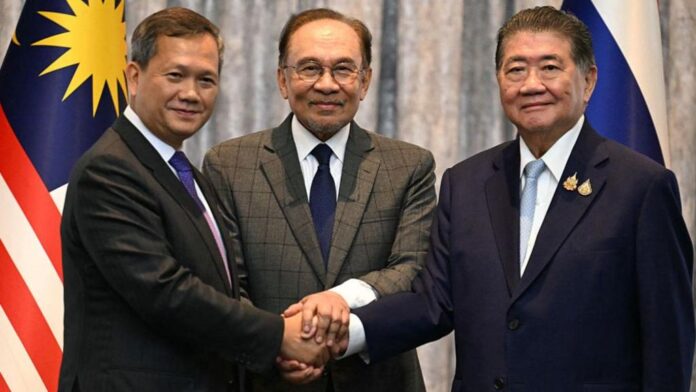Leaders Gather in Putrajaya for Urgent Talks
Malaysian prime minister Anwar Ibrahim opened his official residence in Putrajaya to acting Thai prime minister Phumtham Wechayachai and Cambodian prime minister Hun Manet on July 28, 2025. He said both countries agreed to stop shooting at one another at 17:00 GMT on the same day. The meeting marked an abrupt change after days of fierce artillery exchanges that killed dozens and sent thousands running for safety.
Details of the Ceasefire Agreement

Anwar used clear language when he announced an “immediate and unconditional” halt to the fighting. He said the deal would start at midnight local time, which is 17:00 GMT. He added that military commanders from both sides would meet the next day to work out the formal steps needed to keep troops apart. Thousands of civilians have fled across both sides of the border after rocket attacks and sniper fire damaged villages and fields.
Role of External Powers
Leaders of the United States and China spoke with all three prime ministers in the days before the talks. He credited their calls for helping push both sides toward a deal. U.S. President Donald Trump and top Chinese officials reached out to urge restraint as tensions rose near the 800‑kilometer frontier, which holds ancient temples claimed by both nations.
Voices from the Ground

Al Jazeera reporters at the site of the talks said the presence of high‑ranking officials made the difference. Before the meeting began, artillery fire echoed near the compound gates. At the same time, both Cambodia and Thailand were moving troops and supplies into border areas. On July 27, Cambodia stationed rocket launchers near Oddar Meanchey province. Thai soldiers then responded with patrols in Sisaket province, where homes suffered damage and residents ran for cover.
Personal Analysis of the Outcome
This break in fighting shows that calm can come when leaders speak face to face. It also proves that outside pressure from big powers can sway national decisions. Yet this truce must hold against old feelings of mistrust. Each side blames the other for starting the fighting at disputed temples. Unless both sides build trust through open talks on the ground, new flare‑ups could happen. The next meeting of military commanders will test how strong this promise really is.
What Comes Next
The ceasefire offers a chance for families to return home and for aid groups to bring food and medicine to displaced people. Security experts say observers should watch how both armies pull back. They also say that wider talks are needed to map out a lasting border agreement.
Sources: Reuters.com

